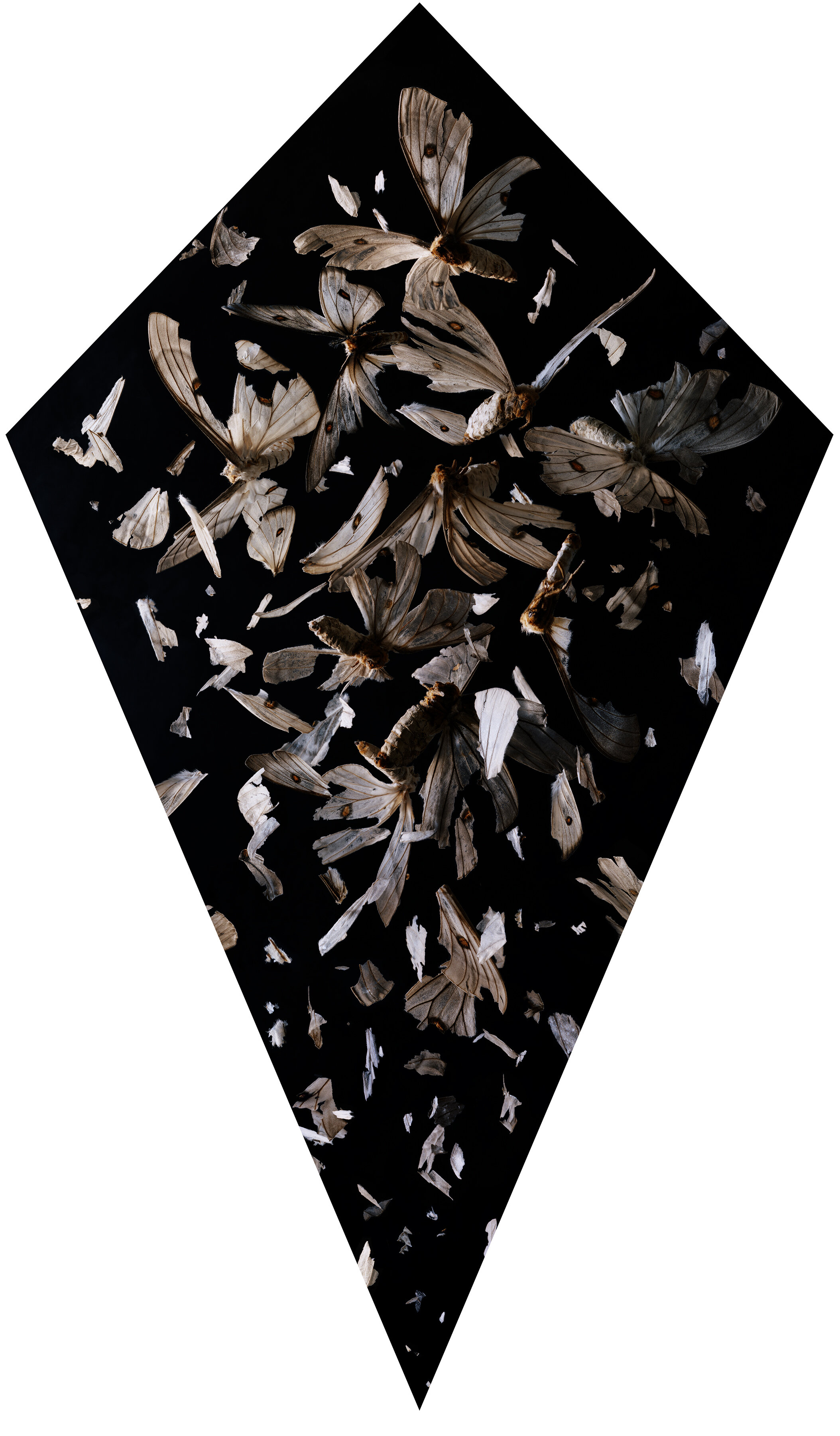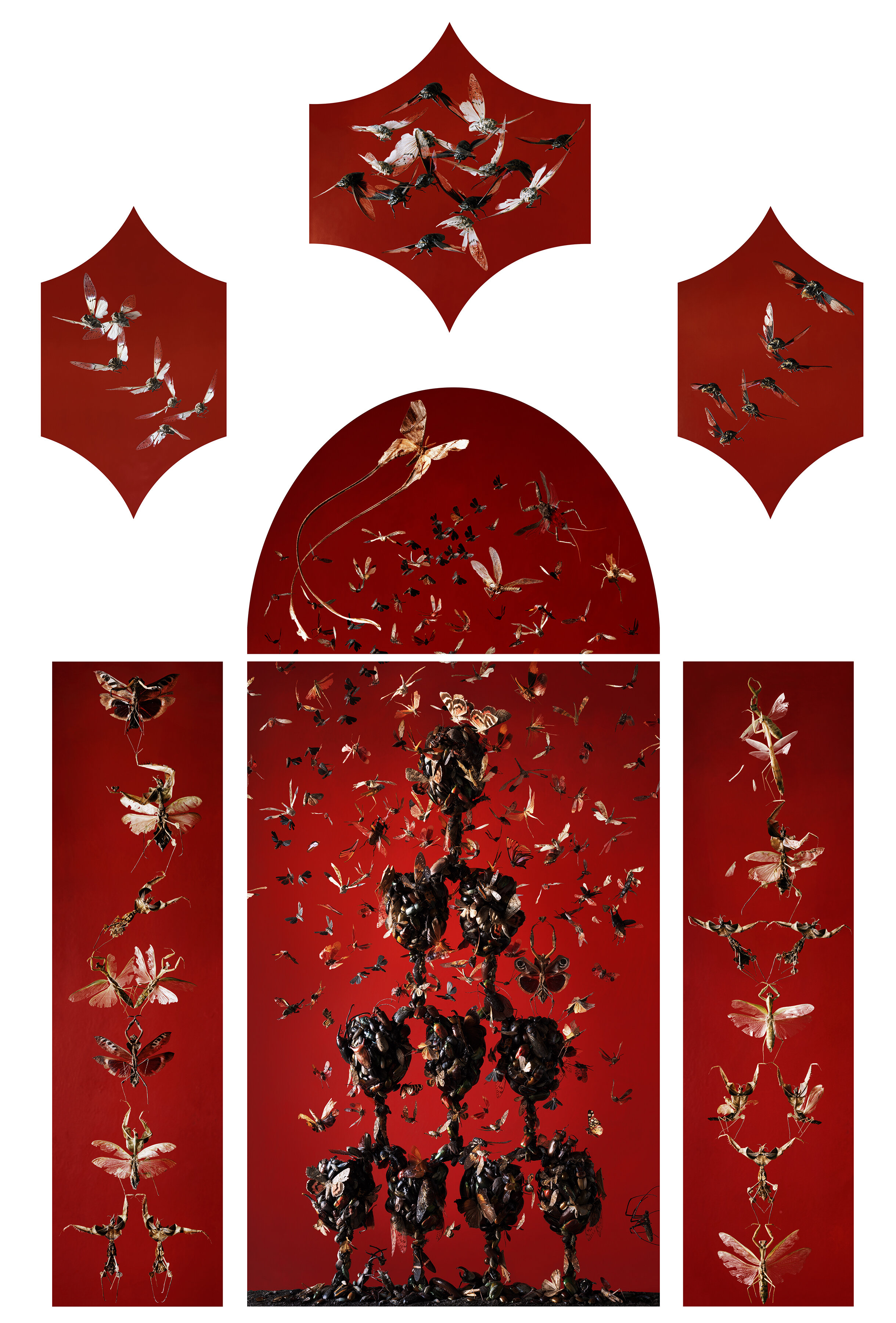
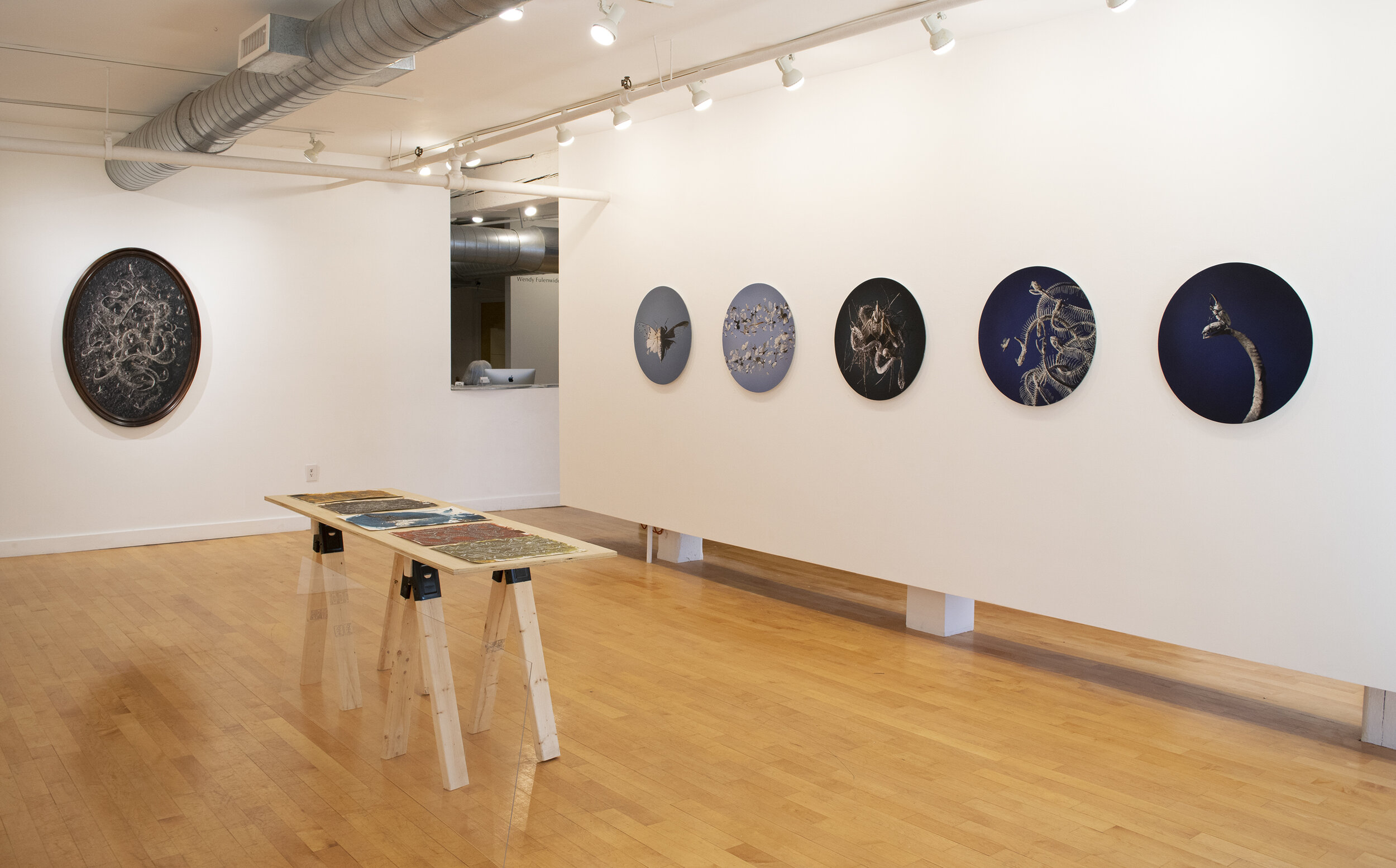
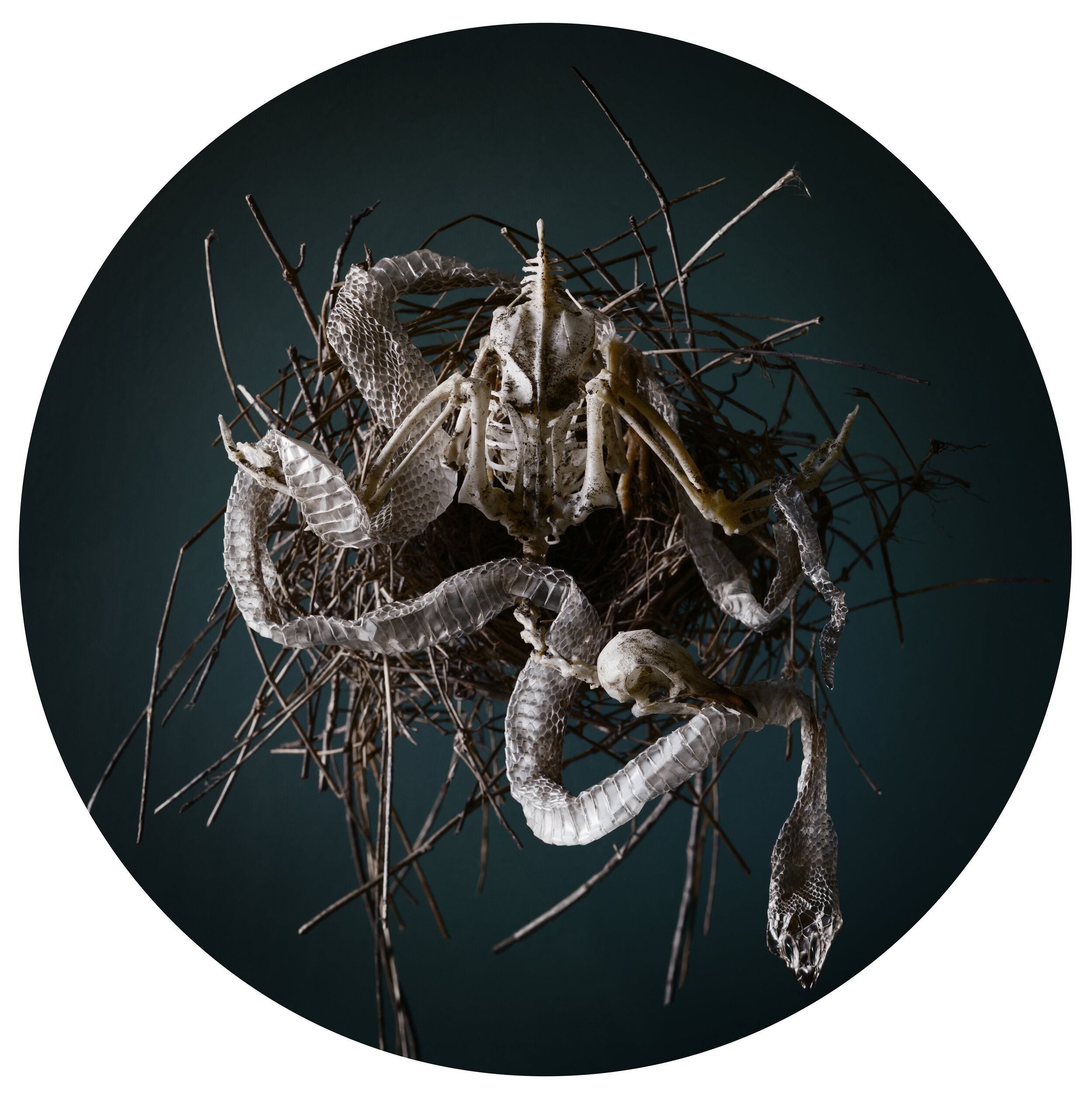
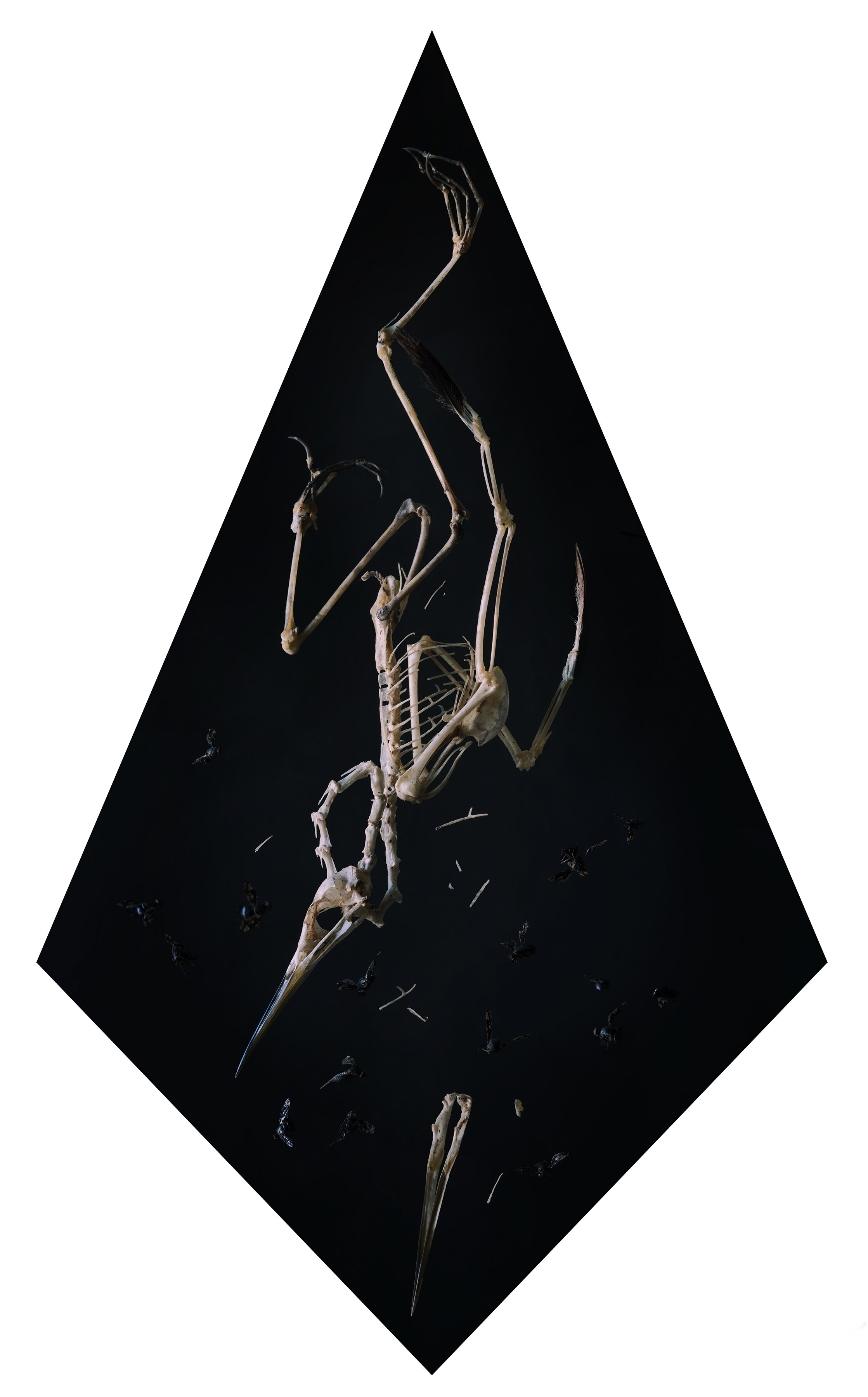
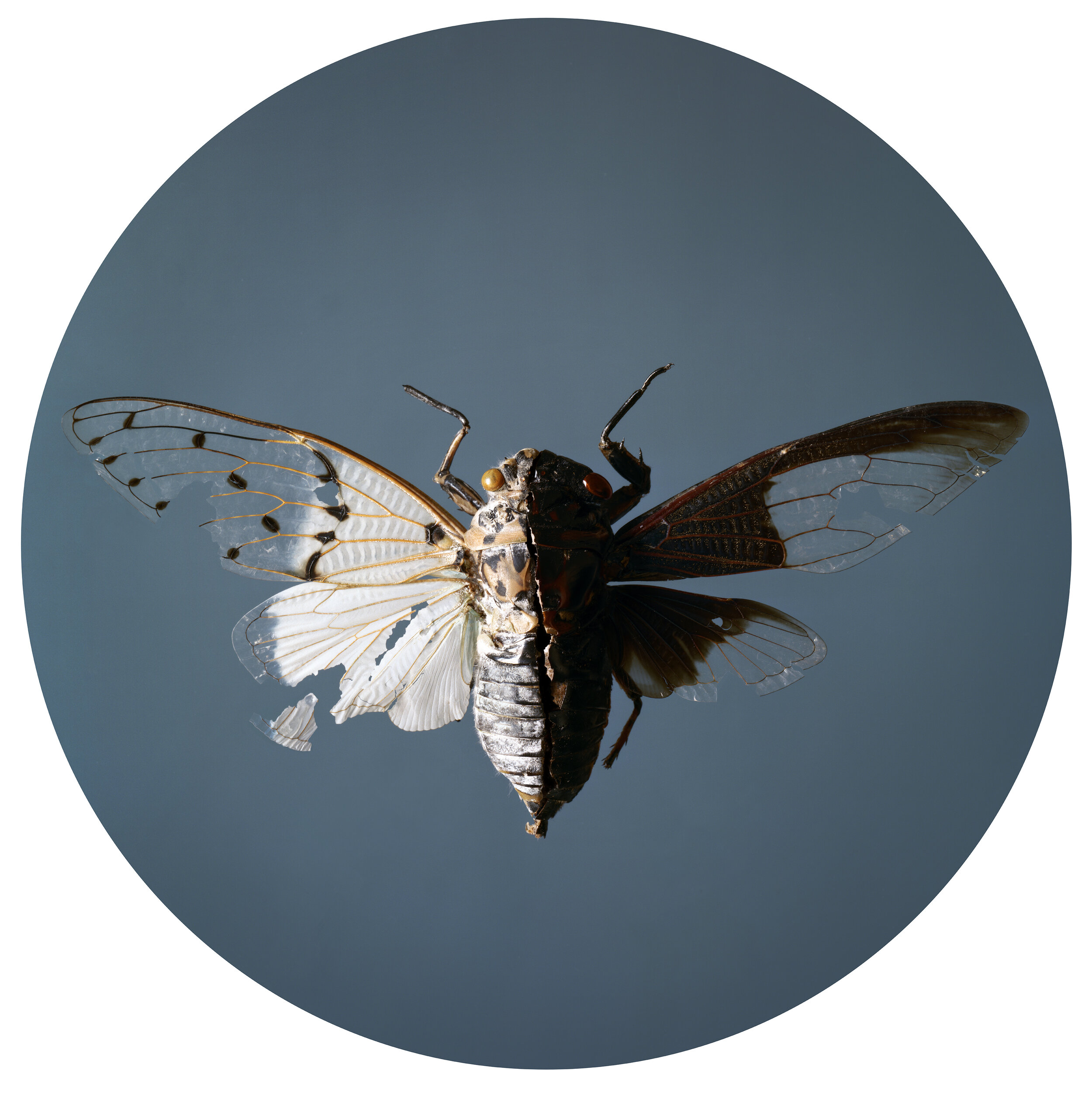
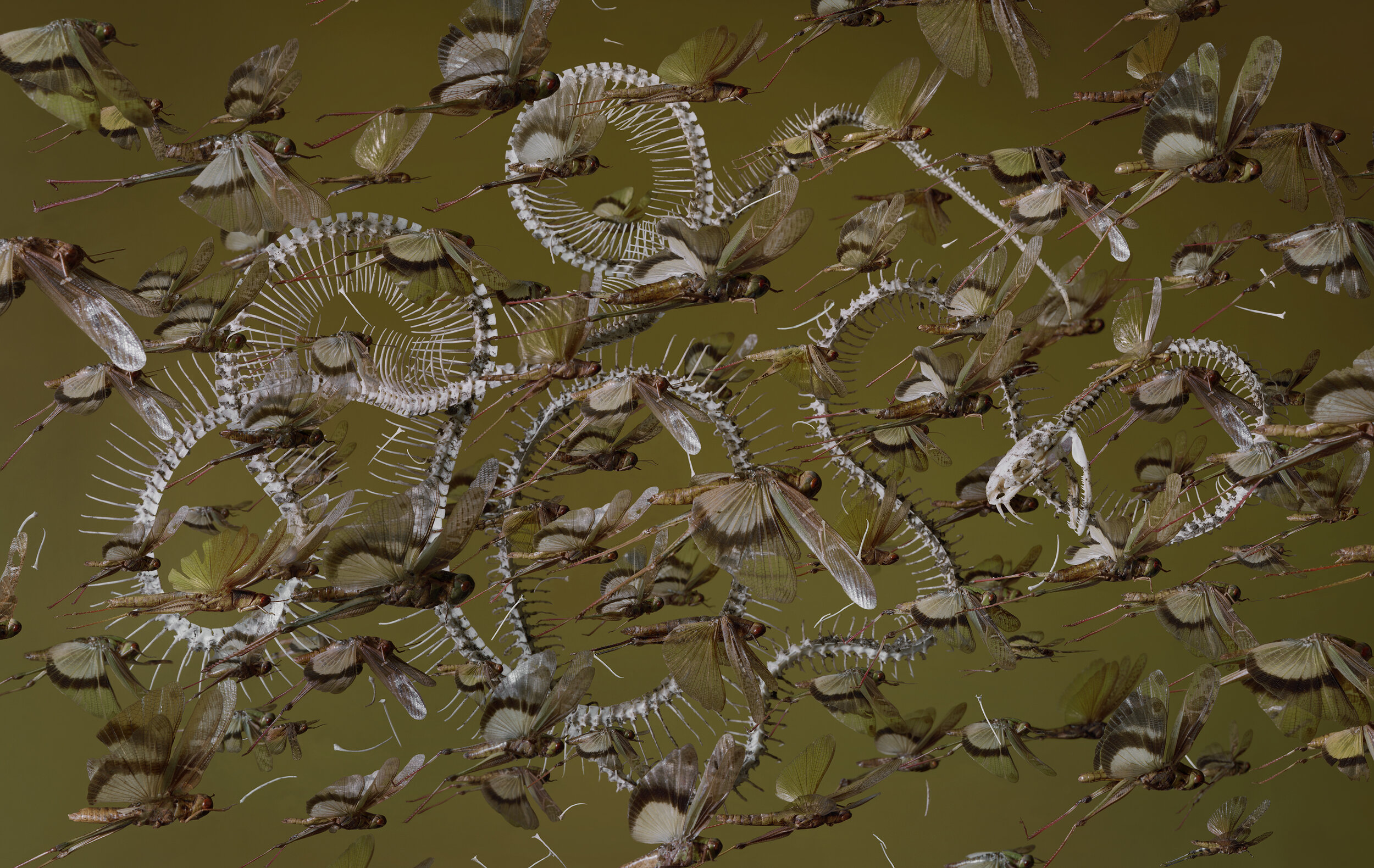
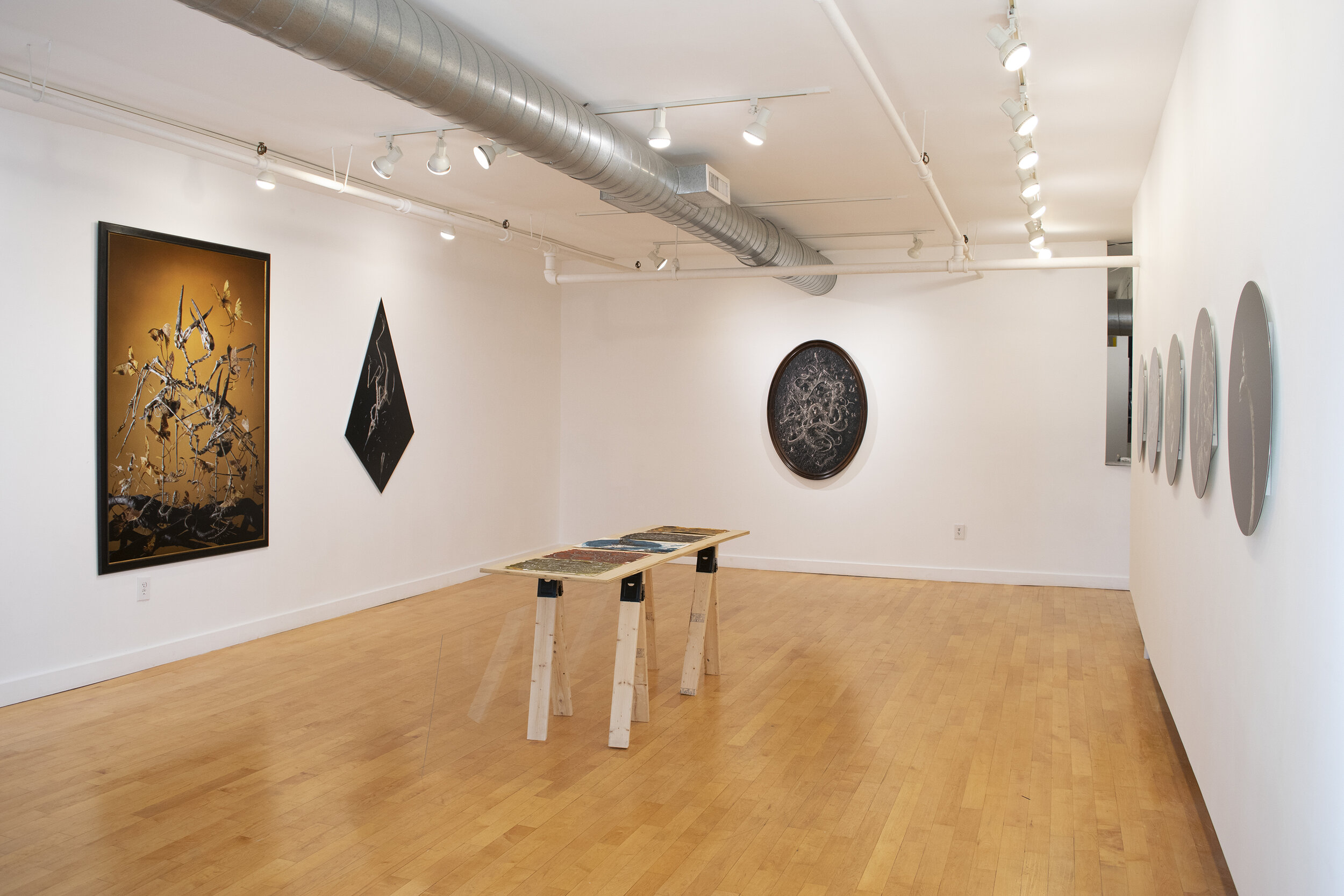
Tara Sellios
Infernalis
We open this season with Tara Sellios’, Infernalis, her third exhibition at the Gallery. Infernalis presents her latest photographs, installations, and drawings. Ms. Sellios’ first exhibit with the Gallery in 2012, Of the Flesh was followed by Luxuria, in 2015. The exhibits have explored a focused and brilliant artistic journey – each a complete, exponentially evolved immersion into the complexity of her obsession and imagery. Ms. Sellios’ Infernalis will occupy all three Gallery spaces.
Ms. Sellios’ photographs are intensely planned and begin with and derive from highly detailed drawings – the drawings provide the structure for the physical manifestation of the still-life which will become the photograph. The still-life is patiently constructed in her studio, an 8x10” film view camera transforms the sculptural object into an incredibly detailed and sensuous photograph. The content and physical arrangements have become more and more complex – saturated layers with luscious color, art historical references, religious symbolism and visual stimuli. We overindulge our senses with the abundance of information and sensation. The images expose the viewer to both beauty and darkness, to life and death, the ambiguity that inhabits the moment. We are reminded of life’s vulnerability and fragility. The installations encourage a voluntary immersion into the obsessive curiosity that structure, symmetry, evolution, internal mystery, death, even grotesqueness can offer the determined viewer.
“I strive to create images that elegantly articulate the totality of existence, focusing heavily life’s underlying instinctive, carnal nature in the face of fragility and impermanence. The concept of morality in relation to mortality has possessed a significant presence within the history of art, ranging from religious altarpiece imagery to the work of the vanitas painters. Manifesting melancholic, often damning themes with beauty and precision, as these artists did, results in an image that is seductive, forcing the viewer to look, despite its apparent grotesque and morbid nature. Through these images, I aspire to make apparent the restlessness of a life that is knowingly so temporary and vulnerable.
I have always thought of my work as theater or as a book, with each series being an act or a chapter. Prior to the work seen in Infernalis, the content of the imagery was fleshy and lush, using wine and blood as frequent allegorical symbols inspired by Bacchanalia and Christian iconography. This is a continuation of past series into a new narrative world where the feast has dried up and pleasure has subsided. The wine is replaced by dirt and the flesh has withered or burned away to the bone in a seemingly apocalyptic way. Insects, including moths, beetles, cicadas and locusts are significant characters, multiplying throughout the series and eventually overtaking the tableaux. They introduce a heightened sense of the frantic primal instinct that exists within all living creatures, including humans.
End of the world imagery and depictions of Hell from art history, as well as literature, have been a source of inspiration for Infernalis. These works possess a dramatic, eccentric, visceral chaos which can be alluded to the condition of existence in the world. Last Judgement paintings, like that from Michelangelo and Bosch, often depict skies filled with constellations of falling or flying angels, creatures and demons, which has become referential for the composition of insects in the work. The concept of Hell is varied and open to interpretation. It can be thought of as an actual physical terrain where sins are punished or as a psychological space carried within ourselves. It can be an entanglement with an obsession, fear or toxic pleasure. By addressing these themes, I intend to arouse an internal response in the viewer by making imagery that marries the harsh and intense with the elegant and romantic.” - Tara Sellios

